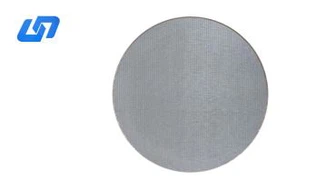How Much is Titanium Worth?
Current Market Price of Titanium
The global market price of titanium varies depending on several factors, including purity level, form, supplier, location, and quantity. Generally, the highest purity level of titanium, which is Grade 5 (90% Ti minimum), commands a higher price compared to lower grades like Grade 2 (98% Ti maximum). Moreover, different forms of titanium also affect pricing, whereby processed forms like bars, sheets, plates, and tubes cost more than raw materials like ore concentrates and scrap metals. Also, supply and demand dynamics in regional markets further influence titanium pricing.
As of writing, according to Metalary.com, a database of metals prices, here are some examples of titanium prices:
1 lb (pound) = $36.74 - $40.30 (depending on purity level and form)
1 gm (gram) = $0.11 -$0.13 (depending on purity level and form)
1 kg (kilogram) = $367.41-$403.04 (depending on purity level and form)
Ounce = $11.51 -$13.59 (depending on purity level and form)

Factors Affecting Titanium Prices
Numerous variables contribute to fluctuations in titanium prices on the world stage. We will look at each factor below in detail.
Supply Side Factors:
Mining and Extraction Costs: Sourcing titanium from either primary sources (Ilmenite, Rutile) or recycled sources largely determines its cost. Miners calculate their break-even point based on energy expenditure per ton extracted rather than solely focusing on material quality. Thus, rising operational costs can increase mineral production costs, which translates to higher prices downstream.
Producer cartels control supplies strategically in nations like China —the largest producer—and sell excess stock through offshore tax havens, influencing benchmark prices. The consensus on total mined quantities, sales agreements between producers, inventory levels maintained by big suppliers, and traders all impact market supply lines and, eventually, commodity pricing.
Demand Side Variables:
End-Use Industry Demand: The aerospace sector absorbs nearly half of annual worldwide deliveries, significantly driving up overall consumption. Consequently, aviation growth directly correlates with increased procurement rates, raising average prices. Other significant sectors that utilize titanium include medical implants, automotive components, jewelry pieces, sports equipment, consumer electronics, desalination plants, and chemicals manufacturing; together these diverse uses sustain constant requirements throughout different economic conditions, underpinning supportively stable pricing ranges within individual contract periods.
Recycling Technologies & Efficiency Improvement: Environmental guidelines encourage companies to implement resource conservation measures via scrap reclaiming systems with reduced waste generation targets per unit produced. This strategy enhances efficiency within specific processes but may limit accessible secondary resources if adopted extensively enough since available feedstock becomes limited when major players prioritize internal reprocessing methods instead of engaging open scrap markets – resulting in constrained availability, thereby supporting higher values attained during peak times.
Geopolitical Consideration and Trade Relationships: Geological reserves distribution creates opportunities for cooperation between countries whose foreign policies promote bilateral alliances through mutual investments covering both natural resources trade partnerships coupled with defense logistics sharing. For example, Russia remains among the top three sources of ilmenite deposits globally alongside Australia and China because of extensive government assistance programs promoting domestic extraction sectors which facilitate economic diversification away from hydrocarbons towards industrialized economies – even though most rutile finds occur naturally associated with other valuable minerals like zircon and yttrium without substantial impurities that raise beneficiation complexity requiring additional process stages before achieving commercially acceptable product quality standards suitable particularly for specialty applications that rely upon those particular features found only inside pure titanium oxides.
That way, governance issues related to cross-border collaboration could impose limitations that hamper predictable sourcing patterns necessary for transparent pricing mechanisms across international borders too complexed hedge risks properly on long-term contracts against wild currency swings caused mainly by divergent monetary policies adapted nationally when transacting business internationally involving fiat money conversion along the entire length of global commodity chains until reaching consumers at retail points-of-sale register counters near them physically situated.
For instance, Section 232 US tariffs introduced during March 2018 affected American importers dealing specifically with derivative products fashioned out of metallic forms obtained mostly abroad, forcing certain clients dependent on just-in-time delivery structures kept lean thanks to smart supply chain optimization software integrated within modern web platforms designed specifically around material flow management processes integral part of digitization initiatives launched recently worldwide which enabled better coordination between market operators using advanced analytics programs capable of detecting subtle changes quickly amidst vast streams of real time data originating endpoints located far apart geographically – something previously impossible doing before affordable computing power made such tasks manageable efficiently today.
Nowadays, buyers seek legal clarity before booking cargoes from distant locations following potential policy transformations expected to take effect soon either directly hitting imported goods portfolios composition containing numerous raw inputs besides just basic iron alloys given protection against cheap imports flooding target regions aiming to induce unfair competition practices deemed detrimental to local jobs preservation lobbied vigorously by labor groups.






